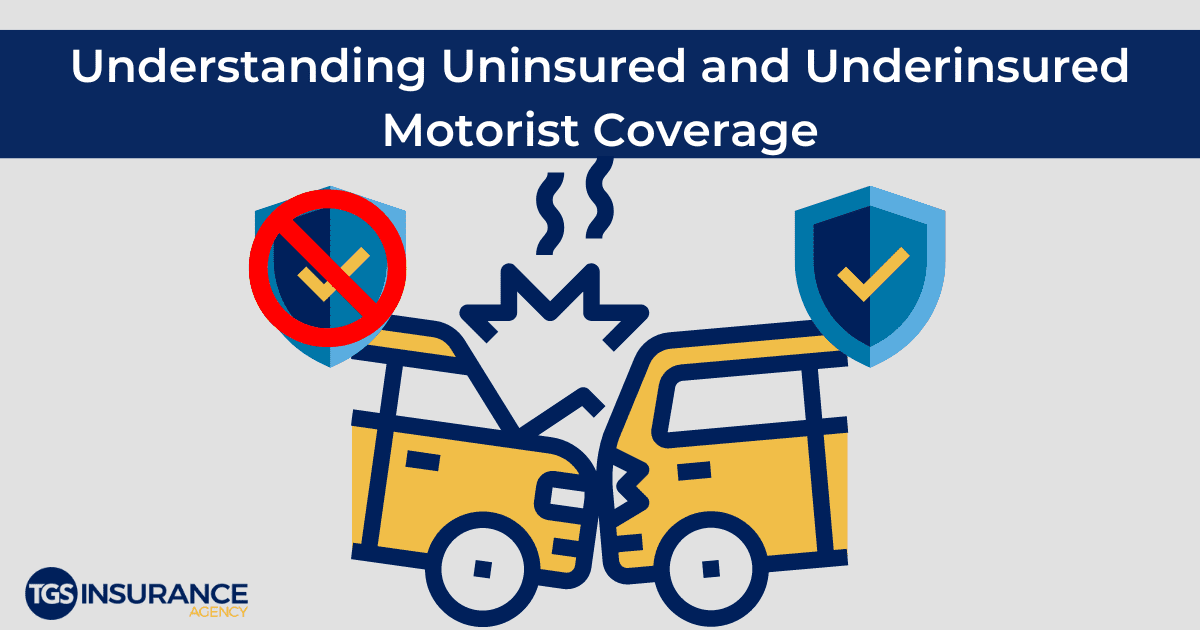Underinsured Motorists: Rising Rates and Coverage Insights
Underinsured motorists, or UIM, represent a significant and growing concern on U.S. roads, with nearly 16 percent of drivers lacking sufficient auto insurance limits to cover damages they might cause. Recent research from the Insurance Research Council reveals an alarming increase in the prevalence of these underinsured drivers, highlighting the risks associated with low liability insurance coverage. In fact, incidents involving UIM have surged, prompting discussions on the necessity for robust UIM coverage as a shield against financial pitfalls in accidents. While some areas, like Washington D.C., report lower UIM rates, states such as Colorado and Louisiana exhibit startling figures as high as 40.9 percent. This trend underscores the importance of understanding auto insurance options to ensure comprehensive protection against potential liabilities in a complex driving landscape.
The phenomenon of drivers lacking adequate insurance is often referred to as being underprotected or minimally insured. This issue poses significant financial risks to individuals who might find themselves involved in accidents where the at-fault party cannot cover associated damages due to low coverage limits. Underinsured motorist protections, part of a broader umbrella of liability options, emerge as crucial components of a responsible car insurance strategy. As the legal environment evolves and aggressive driving behaviors increase, it becomes increasingly necessary to explore all aspects of auto coverage, including protections against uninsured individuals and those inadequately covered. Ensuring that you are well-informed about options such as UIM and the implications of liability limits can empower drivers to mitigate risks effectively.
Understanding the Rise of Underinsured Motorists
In recent years, the significant rise in the number of underinsured motorists (UIM) across the United States has raised concerns among insurance experts and policyholders alike. The Insurance Research Council (IRC) reported an alarming increase from 12.6 percent in 2017 to 16 percent in 2022, highlighting a critical gap in financial responsibility on the roads. Various factors contribute to this trend, including increasing economic pressures that lead drivers to opt for lower auto insurance limits, which ultimately leave them vulnerable in the event of an accident.
The data indicates that states like Colorado and Louisiana have particularly high rates of UIM, with 40.9 percent and 35.6 percent of drivers falling into this category respectively. Such disparities prompt discussions about the efficacy of state regulations surrounding minimum insurance coverage. As risky driving behaviors continue to increase, coupled with the pressures of rising living costs, unfortunately, the issue of underinsured motorists will likely continue to be a pressing topic in auto insurance discussions.
The Importance of UIM Coverage for Drivers
With the rise of underinsured motorists, having sufficient underinsured motorist (UIM) coverage is becoming increasingly vital for every driver. UIM coverage provides a safety net for individuals involved in accidents with drivers whose liability insurance limits cannot adequately compensate for their injuries or damages. This is especially important in states where low insurance limits are prevalent, leaving victims exposed to financial burdens that can arise from medical expenses and property damage.
Policyholders should take the time to assess their current auto insurance limits and consider purchasing higher UIM limits to ensure they are adequately protected. Insurance experts recommend reviewing personal circumstances, including potential medical costs and asset protection, to determine the right level of coverage. In an environment where the frequency of accidents is on the rise, enhanced UIM coverage can protect against the financial pitfalls associated with underinsured motorists, ultimately providing greater peace of mind on the road.
Analyzing the Behavior of Uninsured and Underinsured Motorists
The behaviors of uninsured and underinsured motorists often leave other drivers vulnerable to significant financial risk. Statistics from the IRC underline the growing concern surrounding this phenomenon, as more drivers are opting for minimal coverage in a bid to save money. However, this short-sighted approach can lead to dire consequences, especially in the event of an accident where the resultant damages exceed the at-fault driver’s liability insurance.
Moreover, the unpredictable nature of driving behaviors such as speeding and distracted driving exacerbates these issues. As these risky behaviors become more common, the likelihood of accidents increases, making it imperative for drivers to have insurance policies that can safeguard against such vulnerabilities. Policies that include both underinsured motorist (UIM) and uninsured motorist (UM) coverage become fundamental to financial security in our current driving environment.
Assessing Regional Variances in Auto Insurance Coverage
The variability of underinsured motorist (UIM) rates across different regions in the United States illustrates significant disparities in how insurance is prioritized in various states. For instance, states such as Washington, D.C. boast low UIM rates of 5.6 percent compared to states like Colorado, where the figure reaches an alarming 40.9 percent. Such differences highlight the need for localized approaches in addressing insurance requirements and enhancing public awareness around the importance of comprehensive coverage.
In response to high UIM statistics, insurance regulators and advocates in high-rate states must collaborate to drive awareness for the importance of adequate liability insurance coverage. Through targeted campaigns and education, they can encourage drivers to opt for higher auto insurance limits that protect both themselves and other road users from the implications of being underinsured. The approach towards creating uniformity in auto insurance regulations can lead to safer roads and better financial security for all drivers.
The Role of Research in Understanding Insurance Trends
Research in auto insurance trends, such as the findings from the Insurance Research Council (IRC), plays a critical role in identifying emerging patterns among drivers regarding their insurance choices. These insights illuminate the growing risks associated with underinsured motorists (UIM) and the consequences of inadequate coverage on the road. By analyzing the data collected from major insurers, researchers can dissect the implications of auto insurance limit trends and help shape future policy formulations.
Understanding the nuances of these trends enables insurance companies to better tailor their products to meet the needs of consumers. Additionally, by leveraging credible research findings, policymakers can advocate for regulatory changes that aim to enhance consumer protections and promote financial responsibility among drivers. The ongoing commitment to insurance research allows for an informed dialogue around auto insurance, crucial for preventing the pitfalls associated with being underinsured.
Challenges Drivers Face with Low Auto Insurance Limits
One of the primary challenges drivers encounter is the insufficient coverage limits that can leave them vulnerable after an accident. Research indicates that nearly 16 percent of U.S. drivers carry auto liability insurance limits that fail to cover damages adequately. These low limits can become a financial nightmare for both the at-fault driver and the victim, creating a ripple effect of hardship and litigation costs after an accident.
Drivers should be aware that choosing the state minimum for auto liability insurance may not be enough in today’s environment, where the costs associated with repairs and medical expenses are soaring. The implications of this financial inadequacy often manifest as increased anxiety over potential accidents, reinforcing the importance of comprehensive liability insurance coverage to shield oneself from unpredictable expenses.
The Interplay Between Liability Insurance and UIM Coverage
Liability insurance and underinsured motorist (UIM) coverage are closely intertwined, impacting drivers’ overall financial security in case of an accident. Drivers are mandated to maintain a minimum level of liability insurance; however, this coverage may not provide adequate protection if an accident results in severe injuries or damages that surpass the at-fault driver’s limits. This gap is where UIM coverage becomes essential, offering an additional layer of security for drivers.
Understanding the interplay between these two types of coverage is crucial for policyholders aiming to protect themselves against potential financial loss. By investing in higher UIM coverage, drivers can ensure that they are not left bearing the brunt of expenses that exceed the at-fault driver’s limitations. This proactive approach not only fortifies individual financial health but also contributes to an overall more responsible driving culture.
Strategies for Improving Auto Insurance Literacy
Enhancing auto insurance literacy is pivotal in combating the rising trends among underinsured motorists. Drivers often lack full awareness of their coverage options and the implications of their choices, leading to inadequate policy selections. By implementing educational initiatives, insurance providers can empower consumers with the knowledge needed to make informed decisions regarding their auto insurance policies, including the nuances of UIM and UM coverage.
Workshops, webinars, and community outreach programs focused on auto insurance can help demystify complex terminologies and concepts, such as bodily injury liability and UIM limits. Providing clear, accessible information allows drivers to grasp the significance of having adequate coverage, resulting in a more informed public that prioritizes financial protection on the roads.
The Future of Underinsured Motorist Policies
As the landscape of auto insurance evolves, the future of underinsured motorist (UIM) policies will likely be influenced by ongoing research and changing driving behaviors. Given the increasing incidents of uninsured and underinsured drivers, it becomes critical for insurers to adapt their policies to meet the growing demand for higher coverage limits. Insurers may need to consider innovative solutions that cater to the protective needs of consumers while addressing the contemporary risks inherent in driving.
Additionally, new technologies and digital platforms may facilitate the dissemination of tailored insurance policies, encouraging drivers to select coverage options that align with their individual risk landscapes. The future of UIM policies not only hinges on immediate protection for policyholders but also on foresight in navigating future challenges that arise on the road, emphasizing the collective responsibility of insurers and consumers alike in promoting safe driving practices.
Frequently Asked Questions
What percentage of U.S. drivers were categorized as underinsured motorists in 2022?
In 2022, approximately 15.7 percent of U.S. drivers were identified as underinsured motorists, meaning their auto liability insurance limits were too low to fully cover the damages or injuries they caused.
How does underinsured motorists (UIM) coverage work in auto insurance?
Underinsured motorists (UIM) coverage helps pay for injuries or damages that exceed the liability insurance limits of the at-fault driver. If you are in an accident with a driver who has insufficient coverage, you can file a claim with your own insurer under your UIM policy.
Why is it essential to have underinsured motorists coverage in my auto policy?
Having underinsured motorists coverage is crucial because it offers financial protection in case you’re involved in an accident where the at-fault driver’s insurance is inadequate to cover your medical bills and property damage. The increase in UIM rates shows the growing risk of encountering underinsured drivers on the road.
Which states had the highest rates of underinsured motorists in 2022?
In 2022, the states with the highest rates of underinsured motorists included Colorado (40.9%), Nevada (39.4%), Georgia (37.3%), Louisiana (35.6%), and Kentucky (32.0%), highlighting regional disparities in auto insurance limits.
What are the implications of low liability insurance limits for underinsured motorists?
Low liability insurance limits increase the likelihood of encountering underinsured motorists. This puts drivers at risk of financial hardship in the event of accidents, as their recovery for damages may exceed the at-fault driver’s coverage.
What role does the Insurance Research Council play in understanding underinsured motorists?
The Insurance Research Council (IRC) conducts research on auto insurance trends, including the prevalence of underinsured motorists. Their findings help inform policies and educate drivers about the importance of adequate insurance coverage.
How does the rise of underinsured motorists impact overall auto insurance rates?
The rise in underinsured motorists may lead to higher auto insurance rates, as insurers adjust their pricing to account for increased claims from accidents involving drivers with insufficient coverage.
What are the differences between uninsured motorists and underinsured motorists coverage?
Uninsured motorists (UM) coverage compensates accident victims for damages caused by drivers lacking any insurance, while underinsured motorists (UIM) coverage kicks in when the at-fault driver’s insurance limits are insufficient to cover the costs of damages.
How have pandemic-related changes affected the rates of underinsured motorists?
Initially, during the pandemic, rates of underinsured motorists declined due to reduced driving. However, by 2022, these rates returned to pre-pandemic levels, as driving resumed and UIM frequency increased.
What factors are contributing to the increase in underinsured motorists rates?
Factors contributing to the increase in underinsured motorists rates include risky driving behaviors, such as speeding and distracted driving, as well as economic inflation impacting the affordability of adequate insurance coverage.
| Key Point | Details |
|---|---|
| Percentage of Underinsured Motorists | Approximately 15.7% of U.S. drivers were underinsured in 2022. |
| Change Over Time | UIM rate rose from 12.6% in 2017 to 16% in 2020, maintaining high rates into 2022. |
| State Variations | Rates vary by state; highest in Colorado (40.9%), followed by Nevada (39.4%) and Georgia (37.3%). |
| Estimate Source | Based on claims data from 10 major insurers, representing about half of the market. |
| Types of Coverage | UM coverage for uninsured drivers; UIM coverage for damages exceeding liability limits of at-fault drivers. |
| Impact of Pandemic | UIM frequency declined during shutdowns but returned to pre-pandemic levels by 2022; BI claims still lagging. |
| Risks and Recommendations | Minimum UIM coverage is inadequate due to rising risky driving behaviors and inflation-related costs. |
Summary
Underinsured motorists continue to pose a significant concern for U.S. drivers, with nearly 16% of them lacking adequate liability insurance coverage in 2022. Recent data reveals alarming variations across states, highlighting the importance of understanding and addressing underinsurance. As driving risks increase due to factors such as speeding, distractions, and economic pressures, it becomes critical for drivers to ensure they have sufficient UIM coverage. This proactive approach can provide better financial protection against the consequences of accidents involving underinsured motorists.







